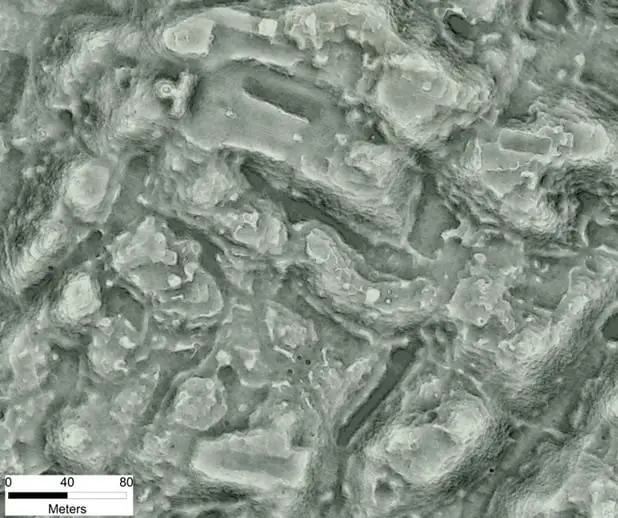Researchers Find Thousand-Year-Old Pyramid City In The Heart Of Mexico
Researchers have made a sensational discovery in Mexico, as they have uncovered the remains of an ancient Pyramid city as densely built as Manhattan. During its peak, this ancient city is believed to have been inhabited by more than 100,000 people. Using state-of-the-art laser technology; users discovered the lost city of Angamuco, built by the ancient Purepecha people, a rival culture of the ancient Azteca. The recently uncovered archaeological site had 26 square kilometers and remained hidden for several centuries as dense vegetation devoured it. Seen here are examples of sunken plazas, patios, and related features in Angamuco. Photograph: C Fisher Since 2011, a group of researchers has used laser scanning technology called LiDAR to examine the remains of an ancient metropolis called Angamuco, established during 900 AD on the shores of Lake Pátzcuaro, in the Mexican state of Michoacán. ‘To think that this massive city existed in the heartland of Mexico for all this time and nobody knew it was there is kind of amazing,’ said Chris Fisher, professor of anthropology at CSU who made the admission of missing the finding on foot. LiDAR technology is helping archaeologists around the globe make unprecedented discoveries. Using traditional methods of on-the-ground archaeological surveys would take 20 years to assemble as much data as two days using the laser-based technique, note experts. One of Angamuco’s ‘neighbourhoods’, revealed using LiDAR technology. Photograph: C Fisher LiDAR can help researchers see what the naked eye can’t, thanks to the technologies ability to penetrate through thick layers of vegetation. The technology offers researchers a new set of eyes, allowing them to see what they’d never see without it. In fact, after seeing the results of the scan, one of the team members realized that he had walked within 10 meters of one of the most massive pyramids of the ancient city of Angamuco, without even realizing it, since the pyramids—and entire city—are covered in thick layers of vegetation. ‘If you do the math, all of a sudden you are talking about 40,000 building foundations up there, which is [about] the same number of building foundations that are on the island of Manhattan.’ In an interview, Fisher said that thanks to LiDAR they have discovered that “more than 100,000 people inhabited the city of Angamuco during its peak, which occurred between the year 1,000 and 1,350 AD. We are talking about the fact that this metropolis is the largest metropolis that, until now, is known in western Mexico during this period.” The discoveries have helped researchers understand that pre-Columbian Mesoamerica was ‘significantly more densely populated at the time of European contact’ than previously thought. The researcher from Colorado State University said that “Angamuco was a large settlement that had many people and a lot of architectural remains.” He added: “Some estimates of our studies show that there may have been more than 40,000 buildings, that is, the same number of buildings that are currently on the island of Manhattan, in New York.” Seen here is the city of Angamuco, which was inhabited by more than 100,000 people during its peak. Photograph: C Fisher Between the 15th and 16th centuries, the Purépecha empire, with capital in Tzintzuntzan, was a Mesoamerican power that resisted the push of the Mexica Empire. This ancient culture encompassed the southern part of the state of Guanajuato, much of the state of Michoacán and the northern region of the state of Guerrero to the south of the State of Mexico. Its military and economic success were due, in part, to the fact that the Purépechas were skilled metal workers in both gold and copper, which undoubtedly helped maintain their independence from the Aztecs. The ancient Purépechas were exclusive speakers of the Purepecha language, an isolated language that has no proven historical relationship with any other in the region. The most famous source of information about the Purépechas is the Michoacán relation written by Fray Jerónimo de Alcalá for Viceroy Antonio de Mendoza around 1540. Source: Laser scanning reveals ‘lost’ ancient Mexican city ‘had as many buildings as Manhattan’

LiDAR—Making Archaeology great again

